Audio filters are some of the important tips within the producer’s toolkit. When used effectively, they will present readability and area to your combine.
Nevertheless, it may be straightforward to over-complicate the usage of filters and get misplaced within the phrases.
On this information, we’ll deal with:
- What an audio filter is
- The fundamental parameters of a filter
- The several types of filters and when to make use of them
- 3 secret tricks to push your sounds to the following stage
Let’s dive in! ?
What Is An Audio Filter
Likelihood is you’ve heard of what EQ (or equalization) is. In a nutshell, a filter is solely a predefined manner of making use of a sure EQ form to your sound.
By both lowering or boosting a sure frequency area, you’ll be able to form particular person sounds to your liking.
The best way you increase or cut back particular frequencies will decide the identify of the filter, as we’ll discover on this information.
One cause to use filters to your sounds is which you can simply alter them dynamically to make your sounds evolve over time. As a substitute of getting a static frequency spectrum taking part in, you might be adjusting in real-time the frequencies coming via for inventive functions.
These days, filters have develop into a cornerstone of music manufacturing. Each DAW from FL Studio to Ableton Dwell has its personal inventory plugin for this goal. There are additionally some well-known third-party filter plugins which we’ll discover via some examples.
The factor to recollect is that filters are merely a particular software of EQ’ing. Subsequently, most parameters used to EQ additionally apply for filters.
The Primary Parameters Of A Filter
Though a refresher by no means hurts, be at liberty to skip this part if you happen to’re a Jedi of EQ’ing. A lot of the controls are the identical.
Cutoff
Typically merely referred to as Frequency in some plugins, this units the frequency level round which the filter shall be utilized.
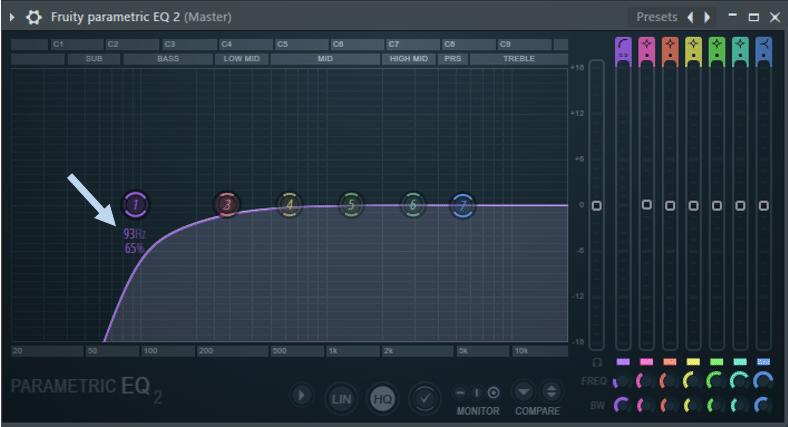
Resonance
The Resonance parameter additionally referred to as Q or Bandwidth, defines the emphasis of the frequencies across the cutoff level.
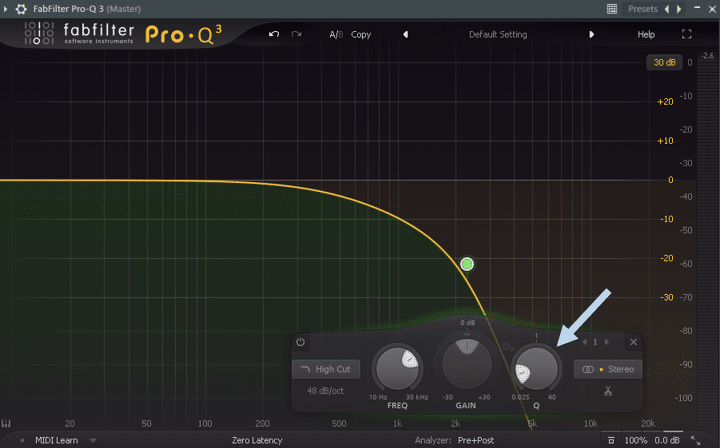
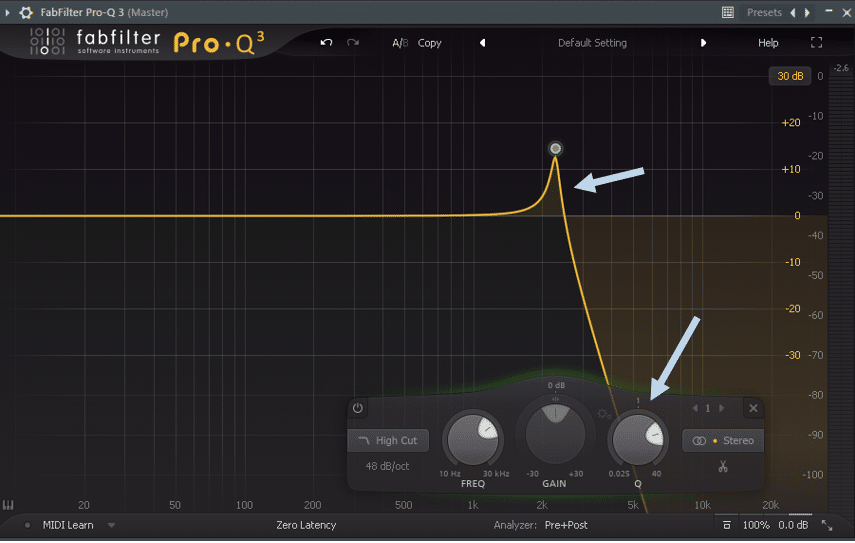
Setting the Q level too excessive can create disagreeable frequency resonances, so pay additional consideration to this setting.
Slope
The Slope determines the steepness of the present audio filter kind. A steep slope will abruptly increase or take away frequencies, whereas a delicate slope shall be extra progressive.
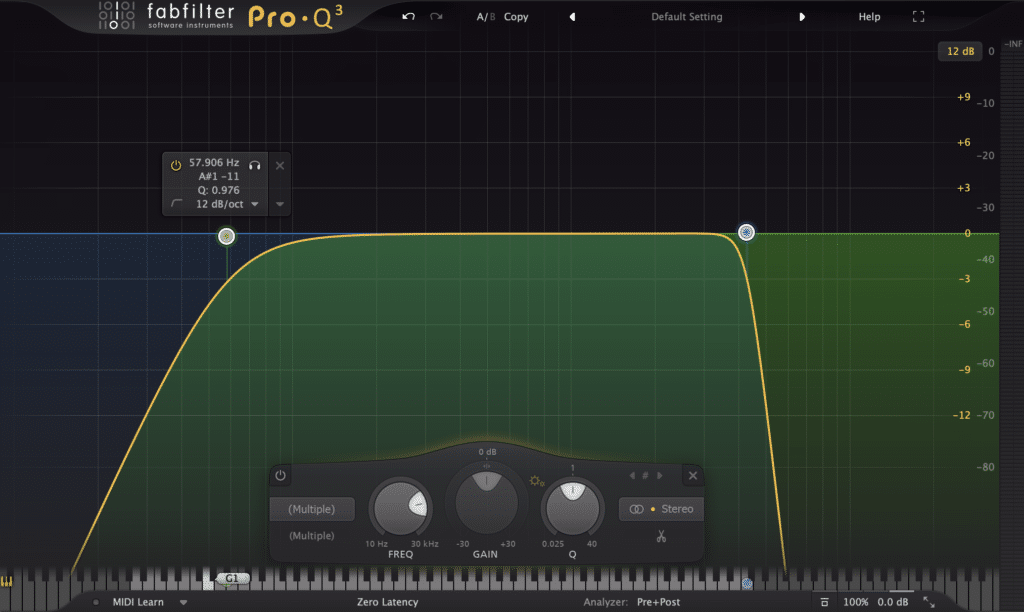
Stereo Placement
Lastly, some plugins permit you to apply a filter to solely chosen channels. That is very best if you happen to solely need to have an effect on the facet or mid info of your sign.
Within the well-known FabFilter Professional-Q 3, you’ll be able to select to selectively apply your filter to the L/R channel, Mid, Facet, or Stereo info of your sign.
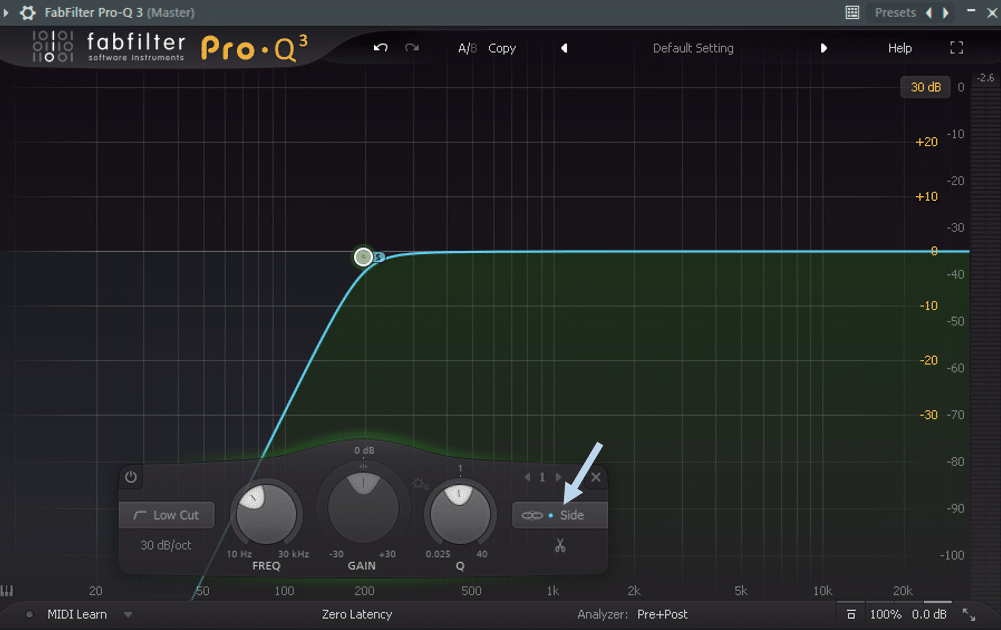
If it’s essential to brush up on all issues mid, facet, and stereo imaging, be certain to take a look at our newest information right here!
Completely different Forms of Audio Filters
As defined above, an audio filter relies on a given EQ form that may increase or take away frequencies.
The chosen form then offers its identify to the filter. Let’s discover essentially the most generally used ones, and how one can apply them to your music.
Low-Go Filter
A low-pass filter will, because the identify suggests, let via frequencies beneath the cutoff level.
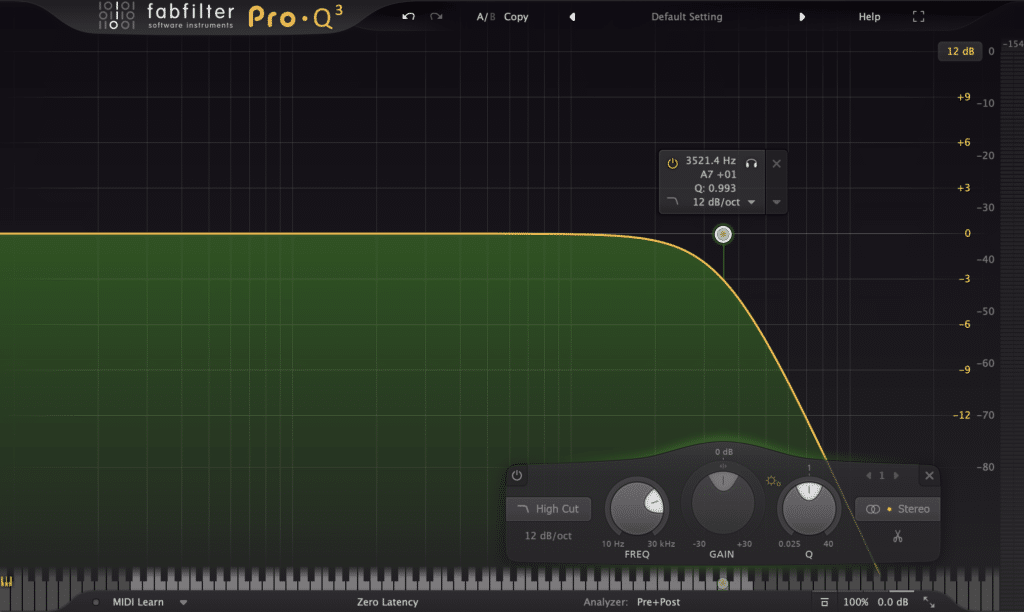
It’s value noting right here that the terminology can generally be complicated. A low-pass filter can also be referred to as a high-cut filter – each take away frequencies above a sure cutoff.
A low-pass filter can be utilized for components which are too brilliant in your combine. For instance, I like to layer my pads to create rich atmospheres.
In that case, I would apply a low-pass to at least one pad to take away the excessive frequencies, whereas retaining the total spectrum of the second pad.
Equally, a low-pass can flip your pads from brilliant and colourful to deep and gloomy. Take heed to the distinction a easy low-pass filter brings to this loop:
Low-passes are additionally used rather a lot in sound design, since modulating them can create cool wobble and movement results.
Excessive-Go Filter
However, a high-pass (or low-cut) filter will take away frequencies beneath a given threshold.
For a lot of producers, this has develop into a go-to step to offer readability to the combo. Low-cutting most components besides your kick and sub-bass between 60 Hz and 120 Hz will assist tighten up the low-end.
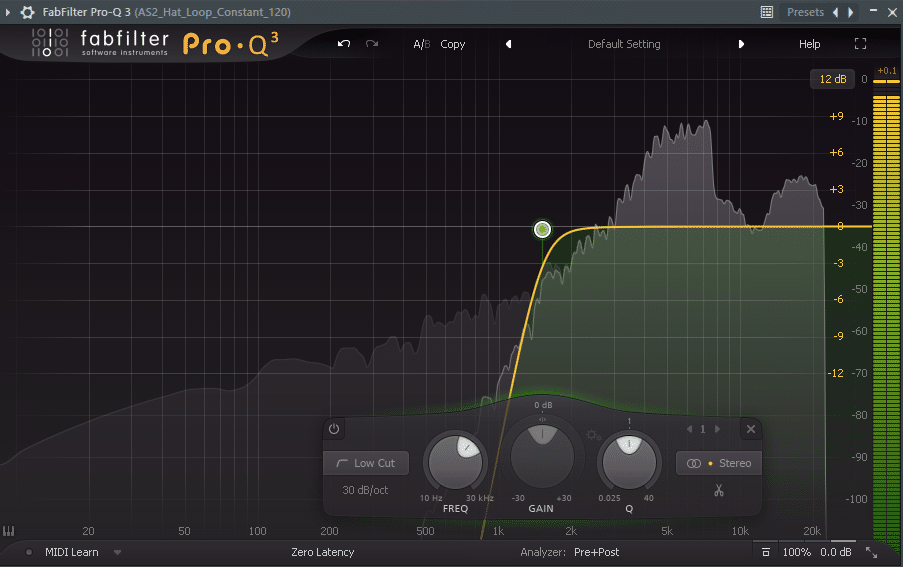
Nevertheless, watch out for making use of too many high-pass filters. Constantly eradicating the low-end out of your sounds can take away their physique and punch.
I’ll typically high-pass my hats, shakers, and different cymbal components that may have pointless low-end info.
This can typically occur after making use of saturation and introducing new frequencies (for the A-to-Z on saturation and distortion, try our Full Information right here).
Equally, a high-pass filter will be a good way to isolate particular components from a loop.
Band-Go Filter
A band-pass audio filter is solely the mix of each a low-pass and a high-pass.

One widespread software of a band-pass filter is the phone impact. That is achieved by setting the middle frequency round 2000 Hz as such:
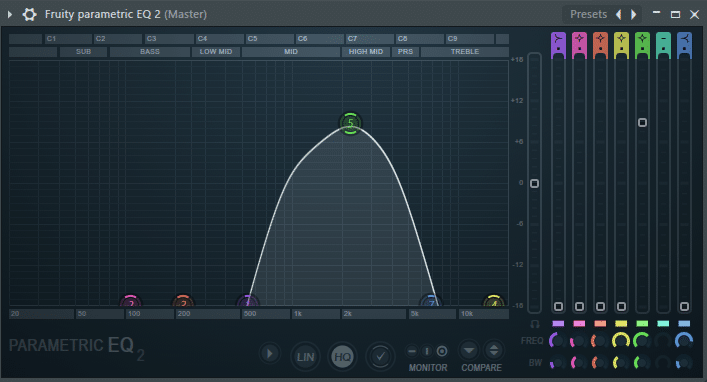
Let’s hearken to how this band-pass filter impacts the sound:
Shelf Filter
If high-cutting or low-cutting is just too drastic, a shelf filter is likely to be a greater choice. It basically units a flat “shelf” after which the frequencies are both boosted or attenuated.
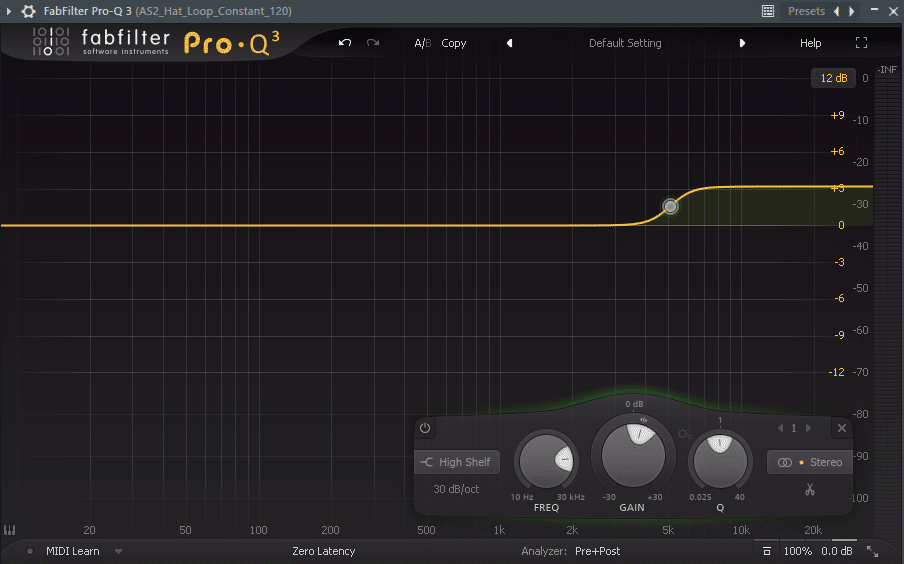
I typically set a delicate +2db excessive shelf to my drum bus to convey out a little bit of brightness within the tops.
Making use of a prime shelf to vocals can also be a good way so as to add that little bit additional readability. Take heed to how the vocal peaks out only a bit extra on this instance:
Notch Filters
Lastly, notch filters (additionally referred to as a band-reject or a band-stop) are the alternative of band-pass filters:
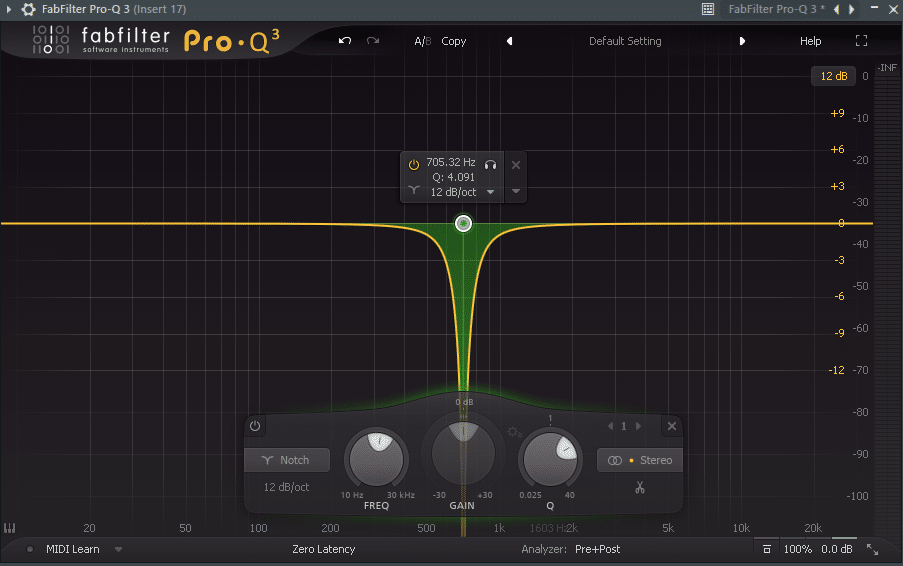
Notches are ideally suited to take away any annoying or resonating frequencies.
An effective way to do that is to comb the frequency spectrum with a steep bell-shaped EQ to isolate frequencies.
As soon as a pointy resonating frequency pokes out, change to a notch filter and reduce that frequency out.
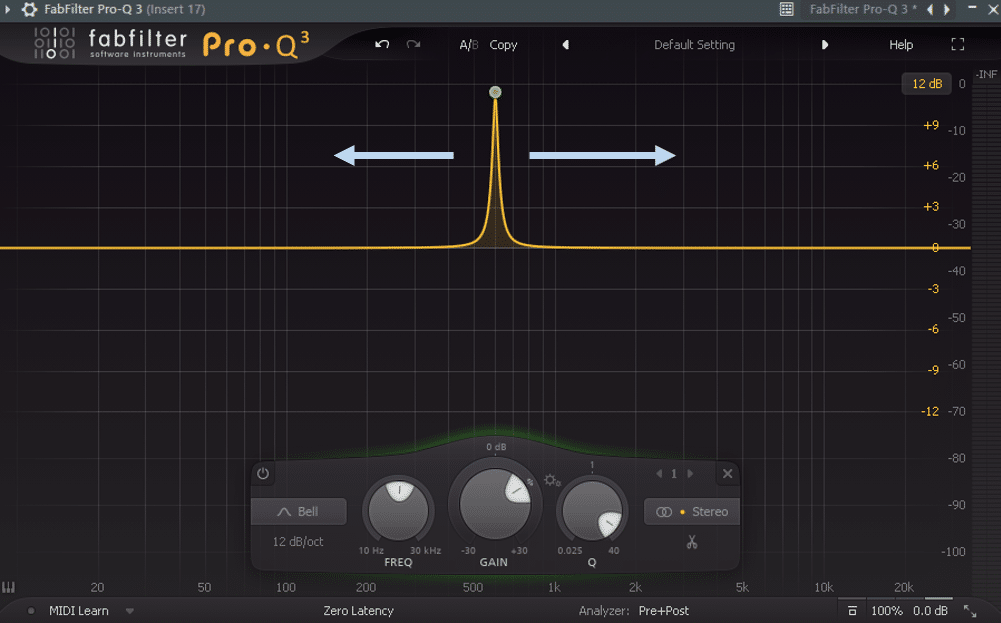
Once more, notch filters can be used to create cool sound design results, particularly when designing basses. The ‘hole’ created sounds notably cool whenever you transfer the cutoff.
3 Artistic Functions of Audio Filters
There are millions of methods you would apply audio filters creatively.
As defined beforehand, a key benefit of filters is the power to regulate them over time.
Listed below are 3 tried and examined functions assured to convey you superb outcomes:
Introduce New Components Seamlessly
Introducing a brand new aspect into your association can show difficult. Typically, fading in doesn’t fairly reduce it.
That is the place a low-pass can show to be helpful. By automating the cutoff and slowly revealing extra frequencies, the transition will sound rather more pure.
For this, I used FL Studio’s inventory plugin Fruity Filter set to low-pass, with a comparatively low resonance. I then automated the cutoff frequency to slowly reveal the complete spectrum of the brand new sound:

In Ableton Dwell, you’ll be able to obtain an analogous consequence with Auto filter.
This system can work with all genres. Nevertheless, it’s particularly properly fitted to genres with gradual progressions akin to home and techno.
The Gate Filter
The gating impact is a well-liked sound that got here to prominence in genres akin to trance and has been resurrected in trendy techno.
A typical solution to create the gate impact is by merely automating the amount up and down.
Nevertheless, you need to use a filter as an alternative. For this, I like to make use of the free plugin Filterstep.
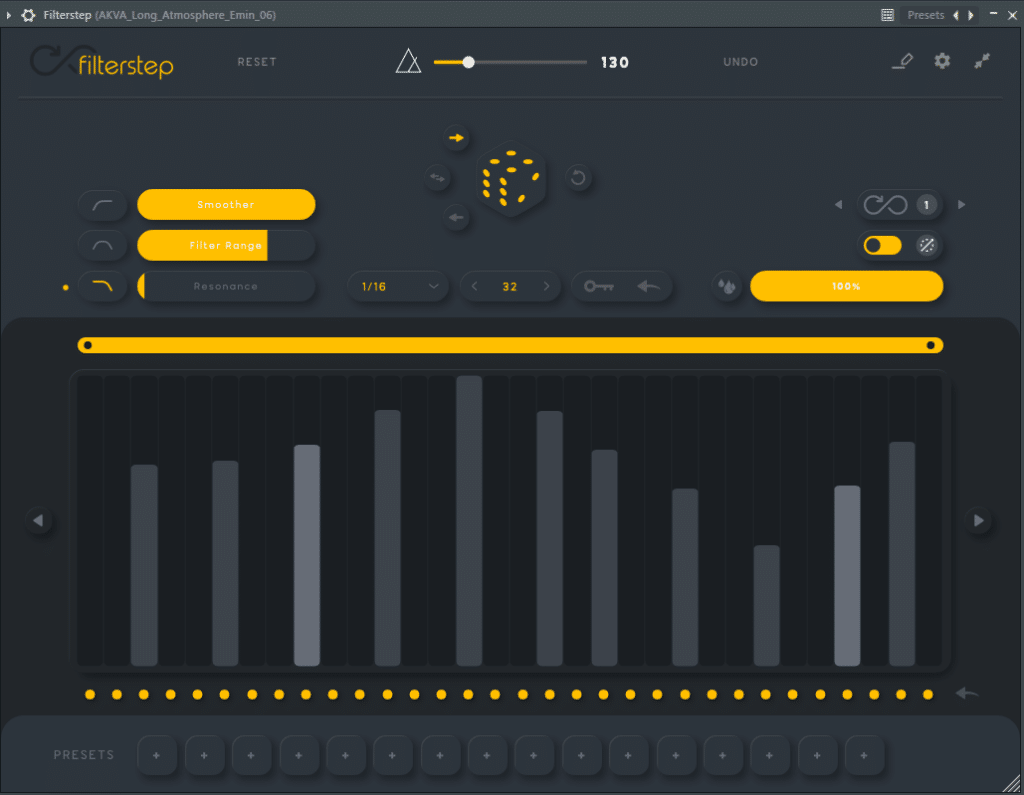
For a free plugin, Filterstep is sort of exceptional. It means that you can attract particular sequences which can decide on which notes the filter is utilized.
Within the above instance, I’ve chosen a low-pass filter, divided the audio into Sixteenth-notes, and drawn within the quantity of filtering to be utilized on sure notes.
Let’s hearken to what this seems like, first with none gate impact, then making use of the above settings:
You may also add a little bit of reverb and sidechain it to fill within the blanks and make the gate smoother. The probabilities with Filterstep are fairly in depth, and I’d actually suggest giving it a attempt.
Really useful: Free VST Plugins – The 51 Finest Synths & Results
Creating Efficient Buildups
Final however not least, filters are a good way to construct anticipation in your tracks. Usually, the 4 to 16 bars previous your drop ought to let the listener know one thing huge is about to occur.
You’ve absolutely heard the phrase “let the bass drop!”. That’s as a result of there shouldn’t be any bass taking part in proper earlier than your drop!
Low-cutting your total observe because the drop approaches is a good way to offer your drop extra punch.
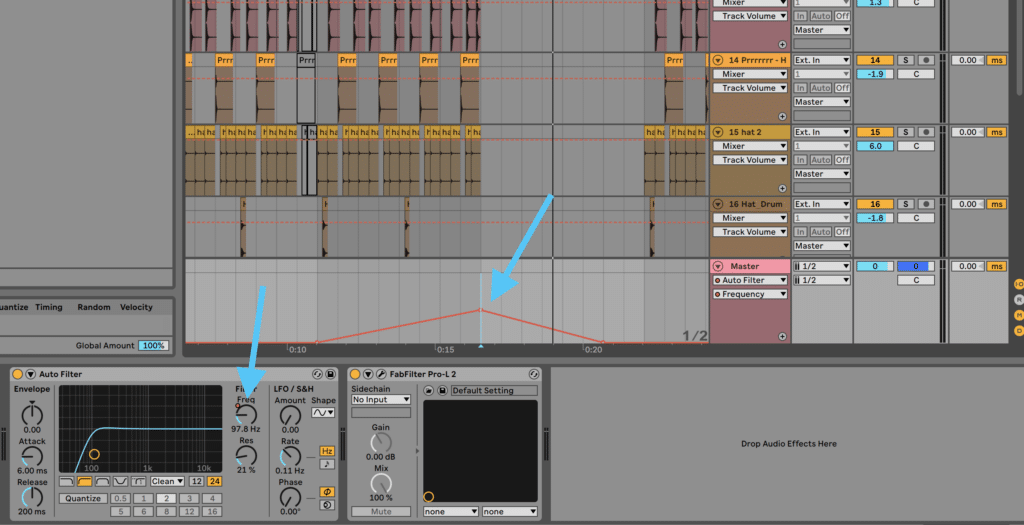
You may even go a step additional. You may progressively low-cut the facet sign of your grasp observe because the drop approaches. This can depart you with an more and more mono sign because the drop approaches.
When the drop ultimately… drops, de-activate each low-cuts. This can convey again each the bass and all of the stereo info, making for a extra impactful drop.
Final Phrases
Hopefully, you’ll now have a greater grasp of audio filters and the best way to apply them in your individual productions. As at all times, bear in mind to experiment and break the principles to find new cool sounds!
And bear in mind to seize that EQ cheat sheet! ?





